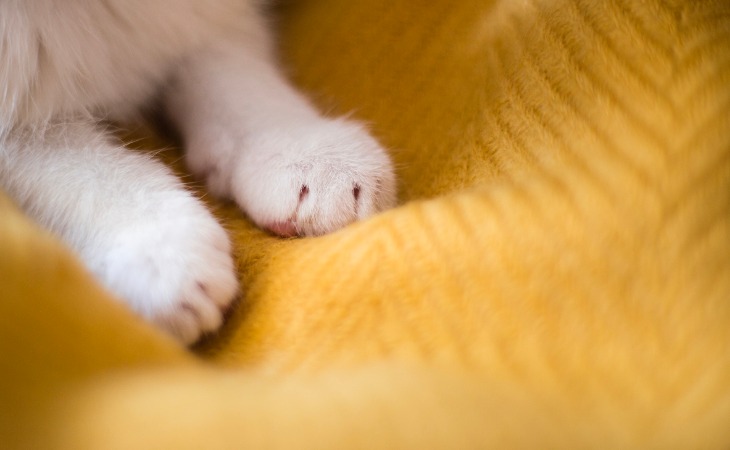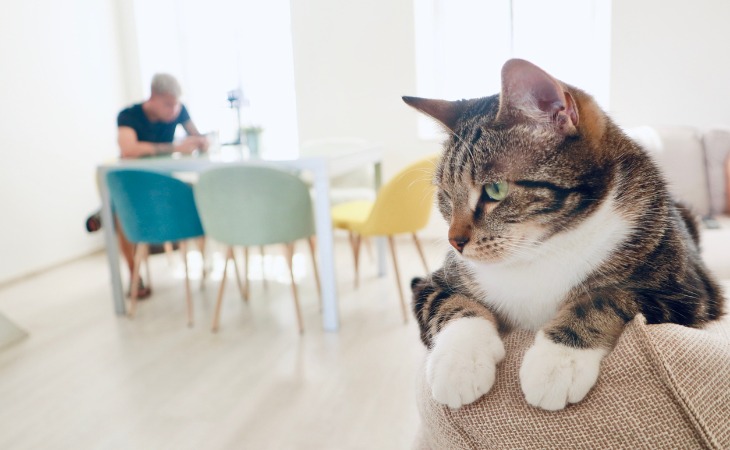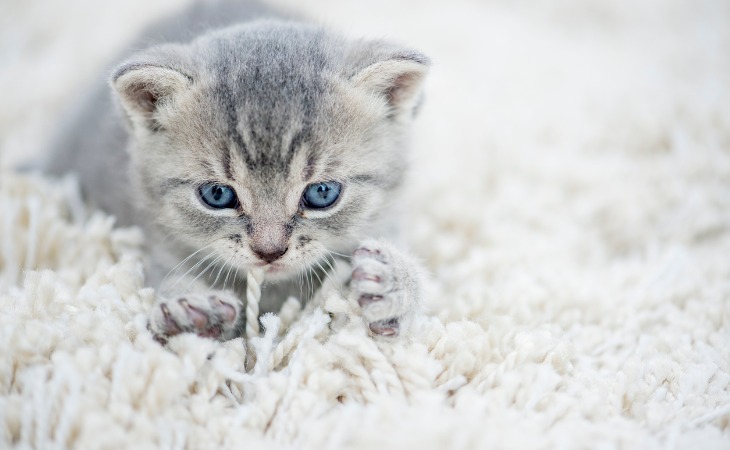Whether you have a cat or you have simply observed this animal, you have probably already seen one kneading another cat, a cushion, or its owner. Have you ever wondered why they do this? In this article, we will explain what this movement means.
Why do kittens knead their mother’s belly?
This allows for an optimal and consistent milk flow. Kittens knead the teats of their mom instinctively, without even thinking about it. They press on the abdomen of their mother alternately using both front legs. It is possible that some kittens do not know how to do this gesture. The mother will then teach them how to do it. The kitten will thus be able to imitate one of the first gestures it saw its mother make and therefore nurse better.
Kneading: a sign of happiness
If you have ever witnessed a kitten nursing, you may have noticed that it is often accompanied by signs of well-being such as purring. A kitten suckles with its eyes closed, happy to knead its mother to get milk.
What does it mean when my cat kneads me?
When a kitten grows up, sometimes it continues to knead other animals, humans or objects. This could be with another cat, a rabbit, a dog, its bed, or its owner. A kitten that kneads feels comfort and reassurance.

Kneading reminds cats of their time as kittens when they used to do this to feed themselves with their mom. It is thus a pleasant moment for them. In most cases, a kneading cat is a happy cat. Many of them purr while kneading. Your cat might cuddle on your thighs and knead your legs to feel good and happy. If your cat seems relaxed with eyes are closed or semi-closed, your cat is well and is simply sharing its happiness with you.
What is my cat trying to tell me?
It is not always that simple to interpret. Kneading can signify many things.
An anxious cat might knead a surface to reassure itself in a stressful situation. Anxious cats tend to use more force when kneading, letting out their claws, and not closing their eyes with contentment. There is no usually purring either. This type of kneading is simply there to help it remember its time as a kitten and feel soothed. If your cat is behaving this way, keep an eye on it. It may be feeling stressed for a variety of reasons. For example, you might have welcomed a new cat or it is feeling separation anxiety. You could try to reassure it with your presence and caring gestures.
If the cat is very anxious, you can also use natural anti-stress products. It is necessary to observe your cat so that you can try to understand what it is trying to tell you. However, the message can also be more complicated than happiness or anxiety.

Is this normal cat behavior?
As we have seen, kneading for a cat is quite normal. It is a behavior carried out since its youngest age.
If your cat doesn’t knead, don’t worry. Some kittens grow out of the habit. Whether it continues to knead or not will depend on your cat’s personality.
However, it could be the sign of something significant if your cat starts to knead more or less than it did before, after nursing. it could be a sign of a problem. It is best to consult a veterinarian or contact a specialized behaviorist. It may be a sign of discomfort due to weaning too early.
Kneading can also be aggressive. The cat may hurt you or tear surfaces with its claws. This shows that there is a problem. To fix this again, take your pet to a specialist.
Is it possible to prevent your cat from kneading?
Kneading is a natural behavior. Cats use this movement to communicate. It can show you that your cat is feeling good or anxious or that it wants to stay in control. If you forbid your cat from expressing itself, it won’t necessarily understand why.
However, if it bothers you or if your kitty is ruining your couch with its claws, you could show it that it needs to stop. You could do this by using a water spray. Use it whenever your cat starts to knead. However, it is necessary to observe your cat carefully before doing this. If your cat is particularly sensitive, this could reinforce its anxiety.
It’s also a good idea to trim your cat’s claws as they could get quite sharp. You could place scratching posts or mats around the house for your cat to use. You could also leave an old blanket in your cat’s favorite napping spot or on the couch to prevent damage from your cat’s claws. If your cat tends to knead your legs, you could also protect your lap with a blanket or small pillow.
To learn more about cats, have a look at this section.

